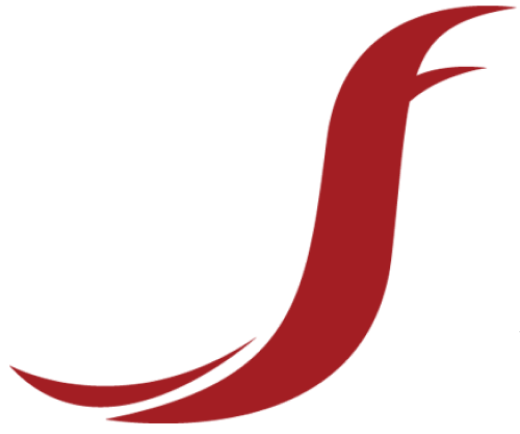
Blog: Scanning Artifacts at University of British Columbia’s Laboratory of Archaeology
Recently, our team got the opportunity to go behind the scenes at UBC‘s Laboratory of Archaeology inside the Museum of Anthropology in Vancouver with Sheri Pak, Matt McCarty, and Kevin Fisher from the Department of Classical, Near Eastern, and Religious Studies (CNERS).
Faculty members and students will use the new HDI Carbon structured-light 3D scanner to capture digital 3D scans of artifacts. The system was purchased with Canada Foundation for Innovation (CFI) John R. Evans Leaders Fund Grant for Building Infrastructure for Spatial Archaeometry and Visualization.
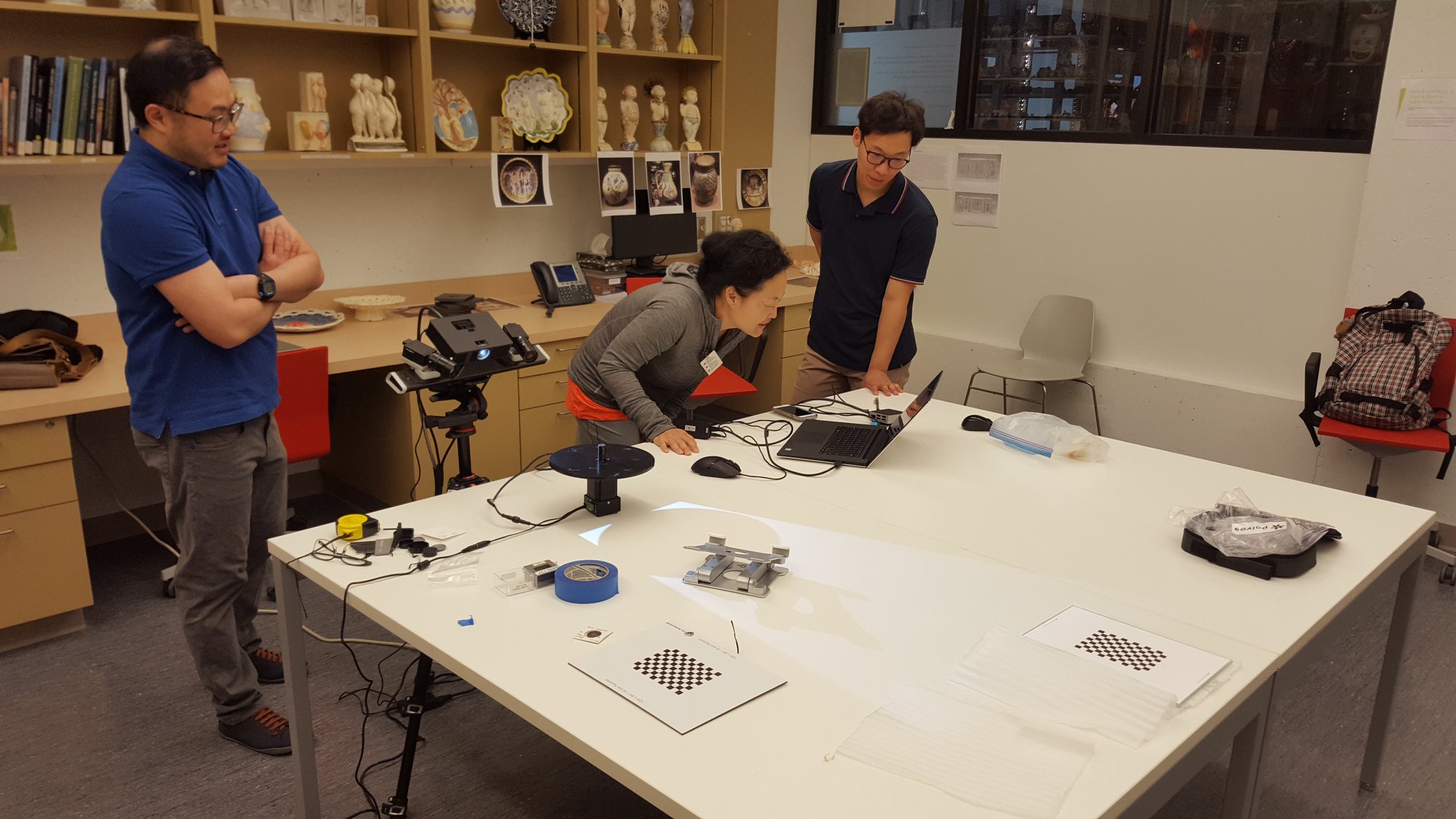
Sheri Pak is working with our team members, Willis and Kai, to automate the 3D scanning process so much of the workflow don’t need to be done manually by hand.
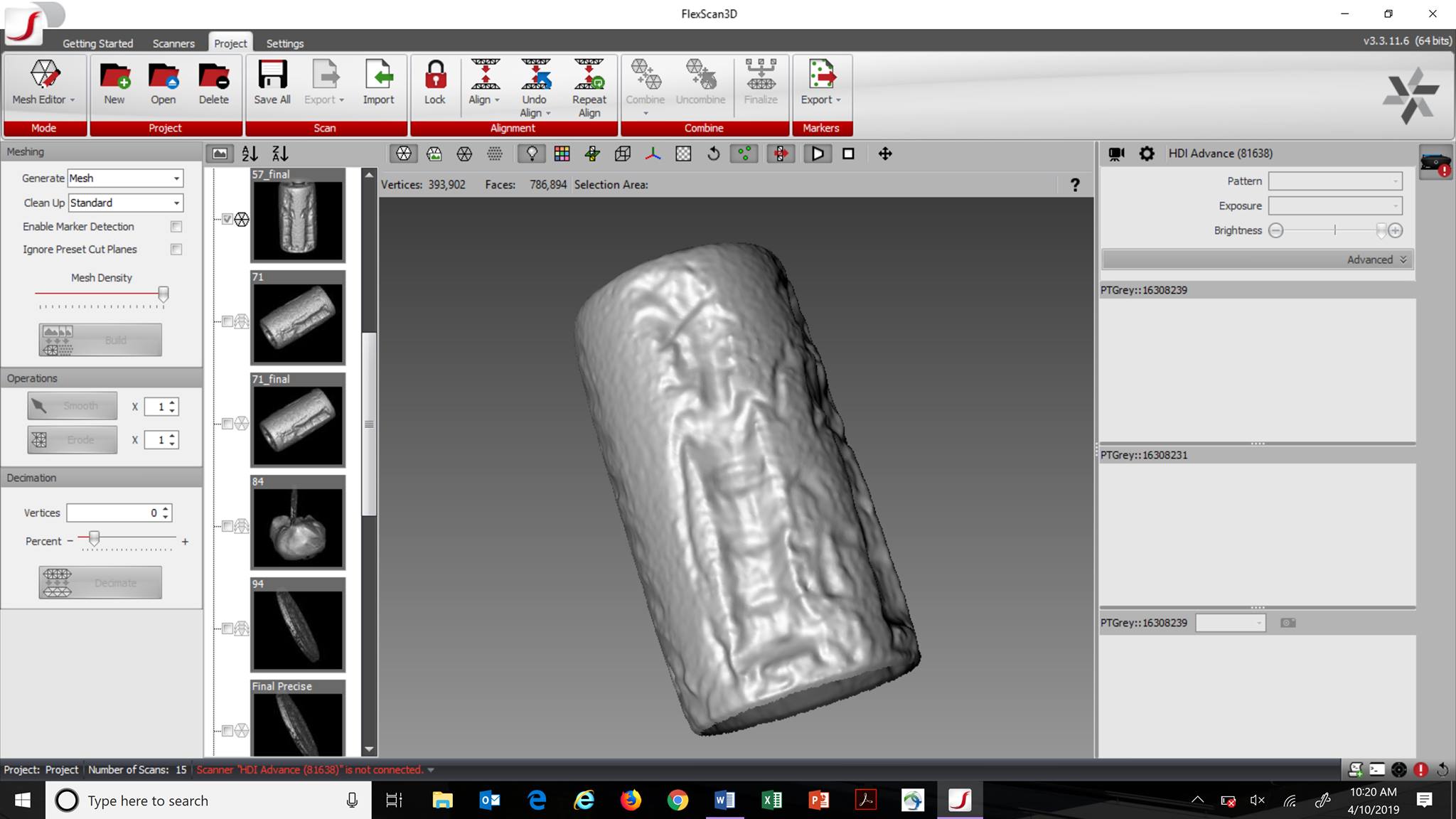
The HDI Carbon can even capture small details from this tiny artifact (actual size is shown in the first image on the rotary table). The system can scan objects at up to 35 micron accuracy.
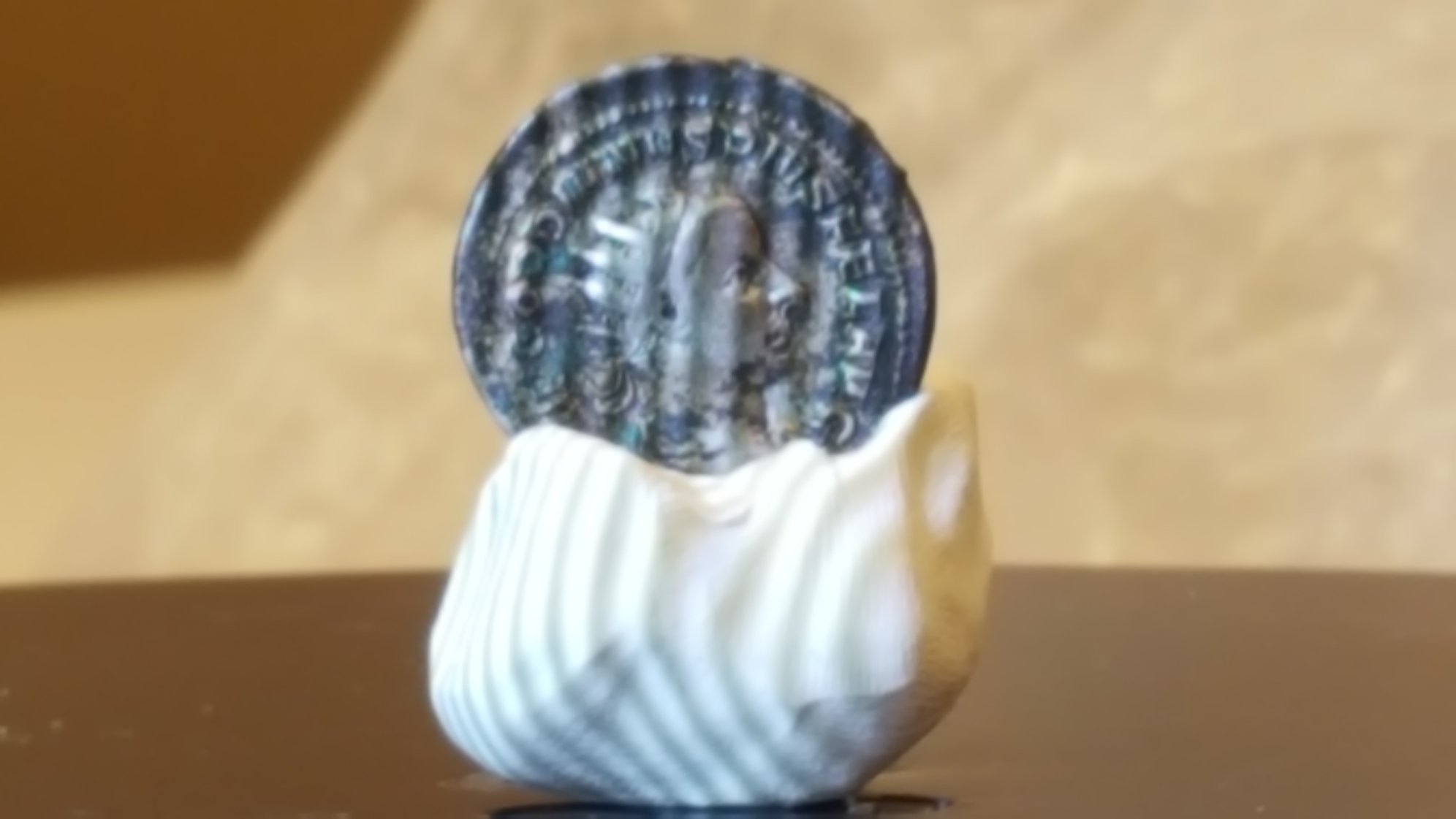
In the process of 3D scanning a coin. The HDI Carbon’s capturing unit projects a series of patterns onto the surface. The images are captured by the 3D scanner and relayed to FlexScan3D. The 3D scanning software uses the photos to calculate the surface measurements of the coin to generate a 3D scan.
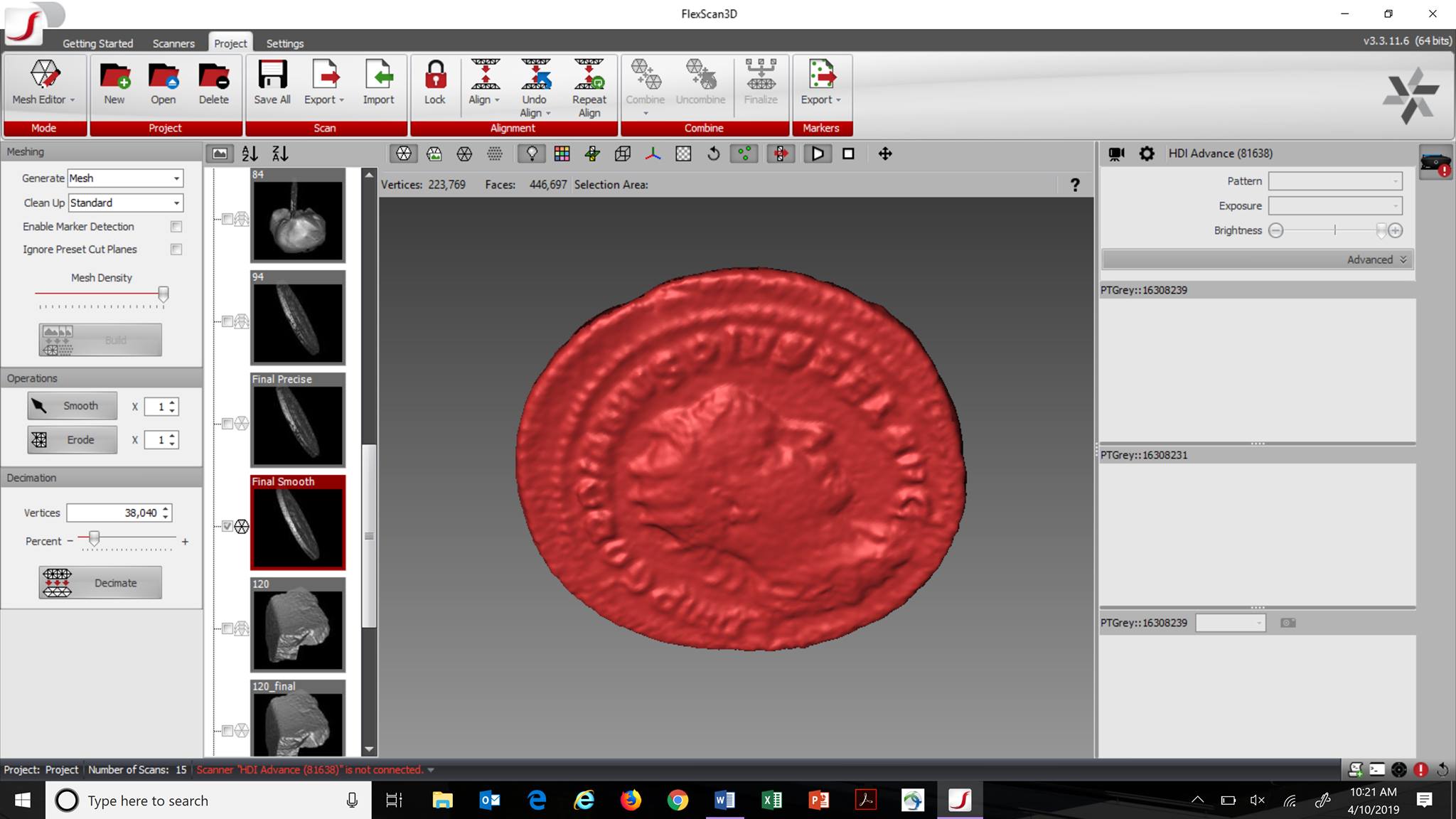
FlexScan3D controls the entire 3D scanning operation. The software comes with the system.
3D Scanning Applications for Archaeology
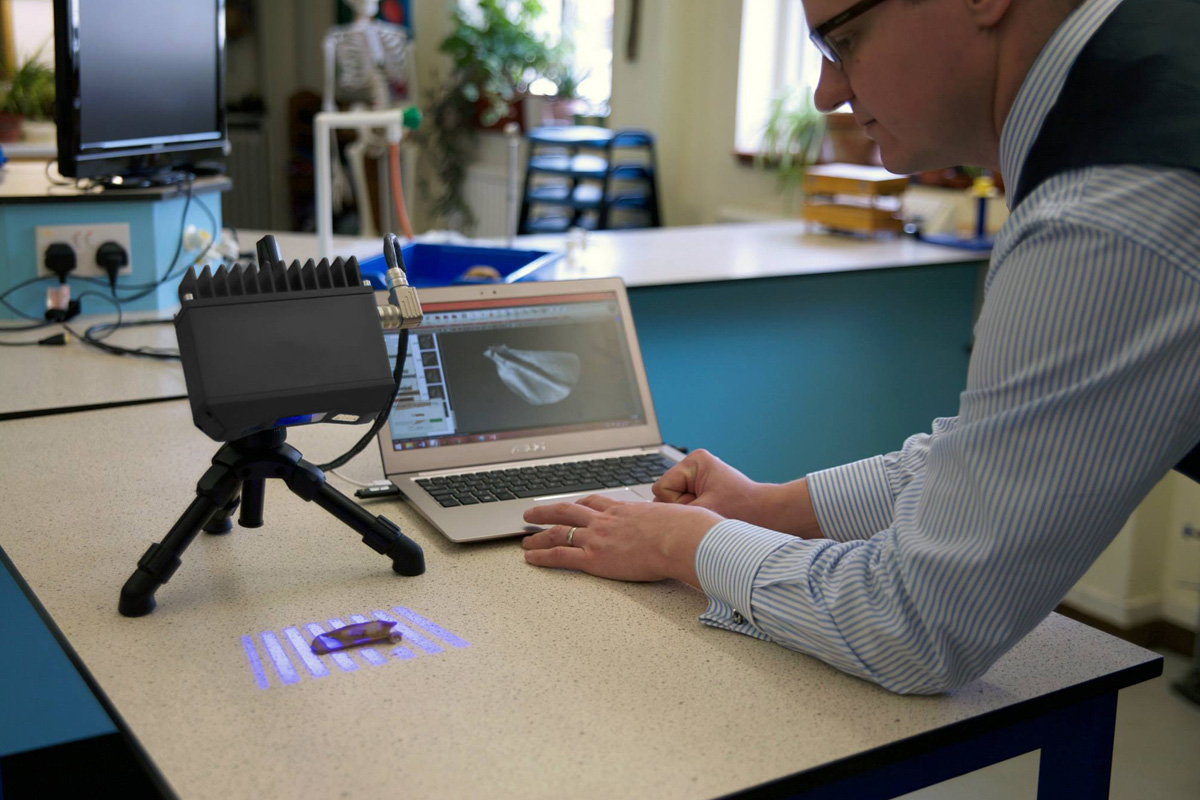
Tom O’Mahoney specializes in 3D imaging for cultural heritage, physical anthropology, and palaeontology.
At Polyga, many of our clients are from universities who use 3D scanning for research purposes. It’s is a versatile technology that has proven its use for archaeology applications, including:
- Collecting 3D surface measurements for morphometric analysis
- Creating digital replicas for 3D printing
- Making 3D scans for educational outreach and museum displays
- Digitally archiving artifacts and sharing them online without going to a museum
We’ve collaborated with Tom O’Mahoney, Postdoctoral researcher at Anglia Ruskin University, who wrote an article explaining his experiences on how to set up a successful lab for 3D scanning archaeological and palaeontological material.
Got Questions If 3D Scanning Is Right For You?
If you are looking for a 3D scanner in Vancouver where our company is based, please feel free to contact us. We also have distributors worldwide in Canada, US, and internationally if you need a one-on-one consultation with a 3D scanning specialist in your local region.
Source: UBC CNERS via Facebook

